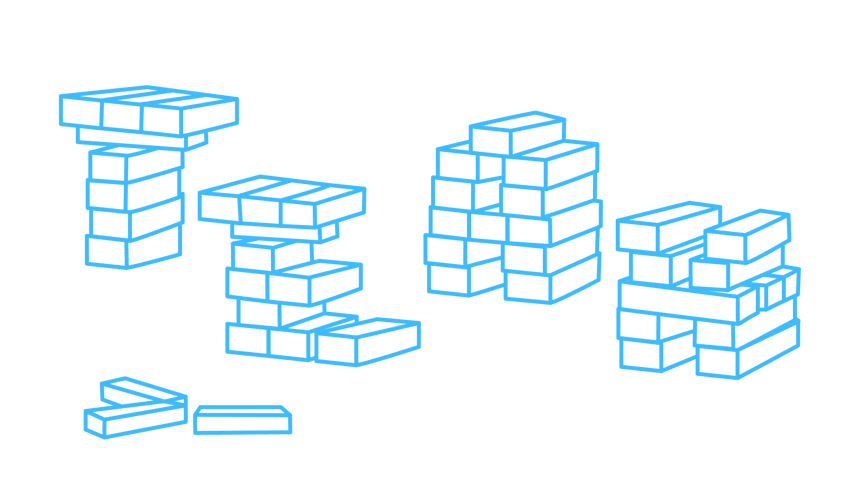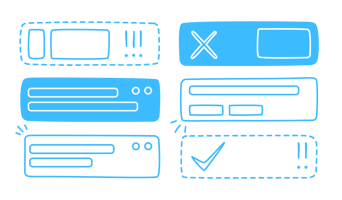Middle leaders and senior leaders in schools often perceive each other as blockers to development....

In a recent activation workshop at a leading K-12 international school we are working with, one participant brought up issues of collaboration between teams in his division. As we saw many affirmative “nods” from participants in other divisions around the table, we decided to briefly reflect.
Consider the following example: schools are continuously working on developing their curriculum and throughout the past years, much energy has been channeled into assessment practices. This is a topic that needs to be well-aligned across the school in order to ensure consistency (horizontal alignment) and well-structured progression (vertical alignment). As a result, it is an issue that is discussed across the school and in many different teams. A great opportunity for collaboration and energy but too often this becomes a real burden for schools. This can feel like not really moving forward and for individual teachers, not really knowing what applies. But why?
Well, too often, such issues are discussed separately in various departments or left for interpretation by teachers individually. For example, different teams have different discussions and come to different conclusions. Because some leaders are part of some teams but not others, important information sometimes gets overlooked. This lack of consistency can result in spending countless hours re-discussing and trying to get everyone on the same page. Ultimately, decisions are delayed again and again – leaving everyone involved fatigued, as this time could have been spent focusing on the experiences from new assessment formats.
But how can we break this cycle? Research shows that more holistic collaboration between education departments is the key to improve student performance and create meaningful impact, especially since learning has become more complex.
“Collaboration between general and special education […] - the dialogues, the examination of what should be taught, the rethinking of practicum experiences for teachers, the sharing of knowledge and expertise, the faculty modeling - all have high potential to support teachers' ability to work together for meaningful change” (Winn and Blanton, 2005: 1)
Collaboration across teams is key to improve the quality of teaching and learning outcomes for students
Collaboration between different teams is vital for the success of any organization, and the education sector is no exception. Middle leaders, e.g. head of departments, have an essential role in collaborating with each other to achieve common goals. Take, for instance, a teacher working in a support function, such as head of college counseling. He or she might be part of a learning support team, an “English as an additional language”-team of the library or an e-tech integrator. In this role, they collaborate with other groups of teachers of different grade levels on very specific topics.
One of the biggest hurdles that this teacher might face is the missing information of what is happening in other teams when it comes to a specific issue or decision. Many times, leaders jump into the discussion and spend too little time considering the process, who is involved and how. Often, different departments work in silos, which can result in information mismatches. And it doesn’t create transparency either. For example, if the curriculum is being redesigned, a leader will discuss the same issue separately in various teams, with different pieces of information and come to different conclusions each time. Ultimately, this results in frustration because the same core discussions keep coming up and decisions are delayed. People are uncertain what the latest information is: what should they take into account? And as a result, students might not receive the support when they need it.
So, what are the opportunities that teachers can use to strengthen the collaboration with the other relevant teams? And what are ways to collect feedback?
Channel your full energy into building a better school
Learn more about our approach
How to strengthen trust and collaboration between educational departments
Spend more time considering the process – don’t jump into the conversation. Build a working group that includes the relevant people to make sure different teams, and their discussions, stay connected and lead to clarity instead of confusion. Here are some guiding questions for this:
- To strengthen collaboration, middle leaders need to foster relationships with relevant team leaders and stakeholders (e.g., parents, advisors, program coordinators etc.). Depending on the decision or issue, these stakeholders can vary. Therefore, leaders need to identify the key stakeholders they need to collaborate with and establish an ongoing feedback loop. This feedback loop will help identify areas of mutual interest and avoid information asymmetries or parallel streams of communication. For example, an English teacher might find that it takes more collaboration within the grade level opposed to a department as e.g., in grades 11 and 12, students can be in advisory groups. As advisors take closer care of a student’s development, this might be a key collaboration partner to exchange information with.
Assess your current collaboration network
Download the tool
- Another challenge is knowing what needs to be communicated when. Creating a timeline, potentially in the rhythm of the school year, can help map out things to be communicated about and feedback to be gathered from who throughout the school year. By doing so, leaders can identify key events or milestones when they need to communicate and gather feedback. For example, at some point a teacher might need help from the English department because that's the time the students write essays or feedback is needed, because that's when they consider who writes recommendations. This approach helps to stay on track and avoids missing opportunities for collaboration though preplanning.
Reflection question: What information do you need to communicate and what feedback needs to be gathered? At what point throughout the school year?
- Finally, leaders need to identify the right channels to communicate through. Don’t simply write another email to everyone. They should ensure that the information they convey is correct and that it can be accessed later on. One way to achieve this is to use a centralized platform where teachers can share information, collaborate with stakeholders, and give feedback. This could look like joining team or faculty meetings, communicating via a chosen digital channel, maintaining a website or individual conversations if it’s within a smaller group. It is crucial to ensure that the information shared is accessible, clear, and concise adjusted to tailored needs so that nothing falls through the cracks. Ways to enable this could be anything from a web portal to a board in the staff room. In other words, the information shouldn’t get buried or lost, like often times when communicated via email. Remember: one size does not fit all.
Reflection question: What is an easily accessible point to gather relevant information? How can you ensure that it is updated and used properly? Where do you see different approaches for different types of collaboration?
What our workshop highlighted was simple, collaboration between different departments and teams is crucial for the success of a school; in fact, any educational organization. Middle leaders, like heads of department, have an essential role in fostering teamwork and ensuring alignment. While there are hurdles to overcome, such as little transparency of what is happening in other teams, there are also opportunities to strengthen collaboration. We need to think of the how before the what. Middle leaders can add to this by fostering relationships with relevant stakeholders and team leaders, creating a timeline to map out things to communicate, and using the right channels to communicate effectively. By doing so, they can work together to create an effective school environment and deliver better outcomes for students.


